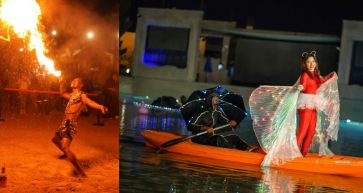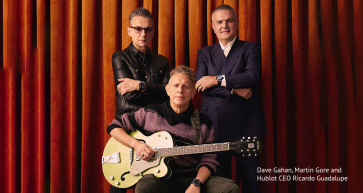
Financial expert Pria Masson Tanwar on financial viability of luxury living.
Louis Vuitton is among the largest companies in the world with a market capitalisation of more than USD210 billion. Hermès is at 74.6 billion and the more retail, yet luxury, Apple has a market cap of USD1 trillion! How and why do brands offer products at such high prices? Because, it makes for a fantastic business model.
Going back to basics, if a product fulfils basic needs, such as basic food items, it is usually driven by low margins and high volumes. As we move up the demand curve, we have products like affordable but branded clothing such as a Zara or an H&M product or a mid-range Sedan, these are priced higher, may or may not have better margins and are still driven by volumes.
 WHERE’S THE LUXE?
WHERE’S THE LUXE?
At the top end of the curve we see the ultra-luxury brands – the “unaffordable” or “aspirational” brands that most of us would like to purchase “someday”. These brands are priced at levels where the margins are high, the volumes are low and yet, sales stay steady.
To many who don’t subscribe to luxury brands, the concept of even wanting to spend so much money on a single product often seems absurd. A bag, after all, is a bag; a car has a purpose of taking us from one point to the other. How much of a better experience can these basic activities provide even at a higher price?
EXPERIENCES NOT PRODUCTS
But therein lies the catch: these businesses are not in the business of the products they offer. They are in the business of branding, marketing and creating experiences.
Every aspect of the product is a story and the creation of an image. The exclusivity of the advertising methods, the location of the retail outlets, the brand ambassadors, the creation story they tell – it’s all meant to transform the product into an experience.
And experiences make for very profitable businesses since the concept of “experience” is intangible by its very nature. Also, experiences are often easier to make aspirational. So, if a person can afford a basic sedan, rather than being satisfied, the likelihood is that they desire the experience of a luxury sedan. And when your product becomes a “goal”, you know you can rarely go wrong.
The other advantage of experience products is that they can be transferred on to other products. So, Ferrari is not just a sports car anymore. It is also an experience in racing. It’s also the brand behind theme parks. Armani is not just about clothes and accessories, it’s also about luxury hotels and apartments. These brands are symbols of a common experience and the target audience attributes a value to that experience and hence pays a premium for it.
MONEY GOES TO MONEY
The target audience is usually price insensitive and or even inversely sensitive i.e. higher prices can mean more demand. So, usually, in recessions, sales are often steady. Aspirational, scalable and price insensitive – all the markings of an excellent business model.
However, on the flipside, luxury can be very risky business. There is a very old adage that goes “it takes money to make money” and it is nowhere truer than in the luxury space.
Even though the capital costs can appear to be low, they are in fact quite high. This is because, to create that experience, every bit of interaction with any external entity is part of that experience. In other words, real estate, brand ambassadors, marketing experts, office space etc, all must speak of luxury – which translates to high levels of expense. And these are intangible expenses. The real estate can be sold, but, all other aspects are not recoverable in any way – hence the downward slide can be fast and slippery.
You can follow Pria on Instagram at money_cues or visit http://www.i2d-consulting.com to know more about her professional experience.



